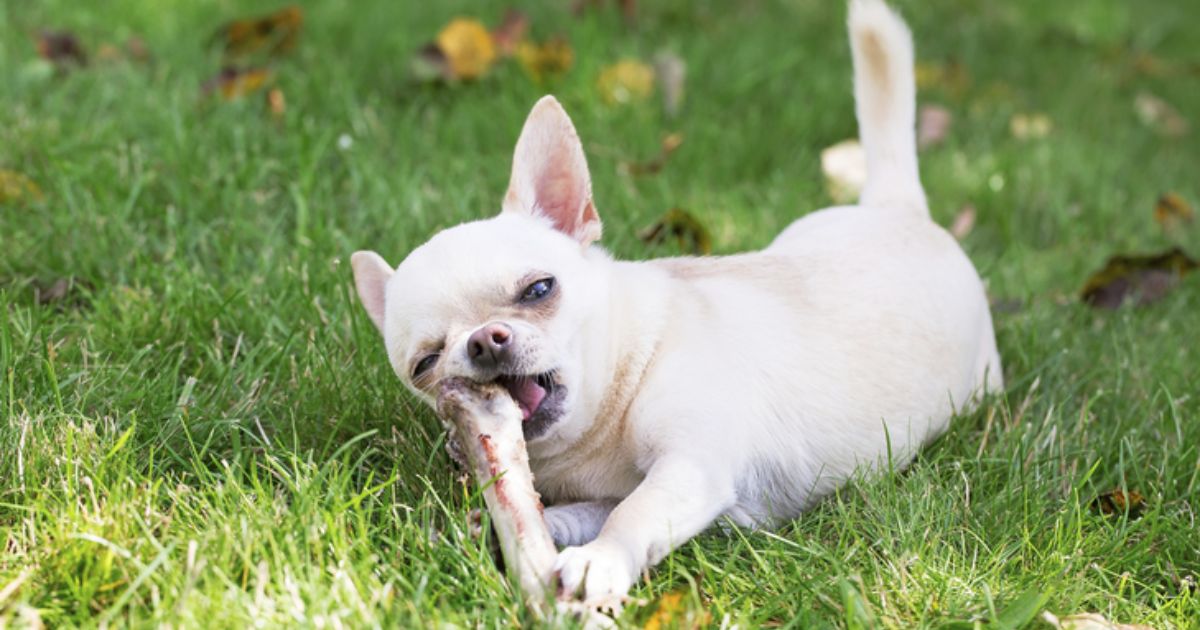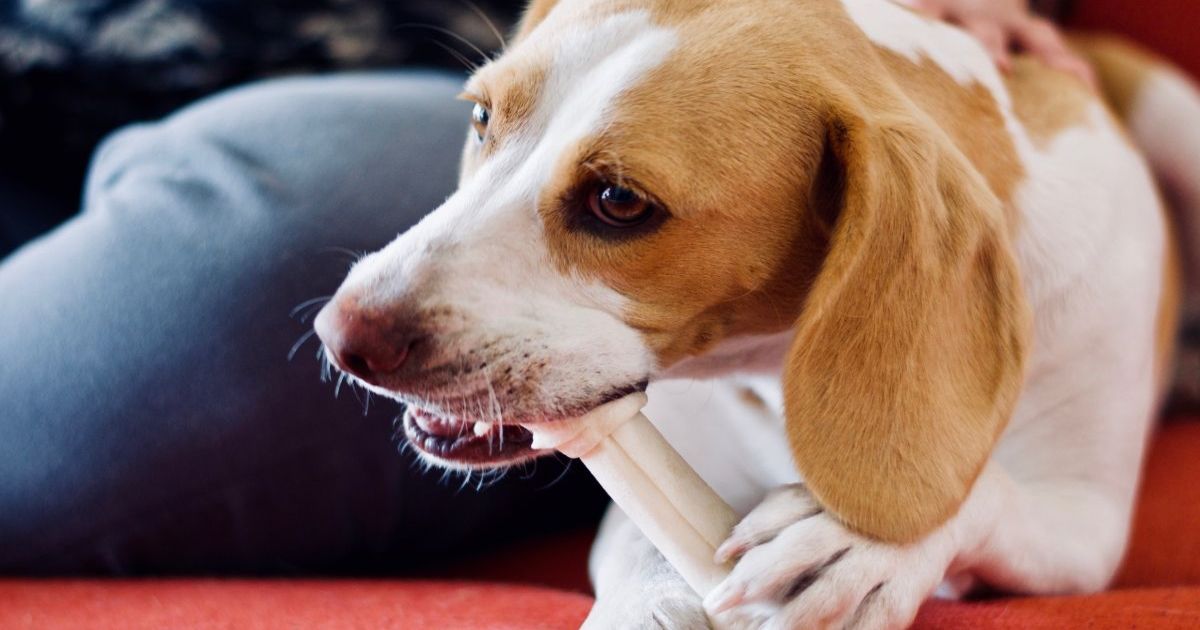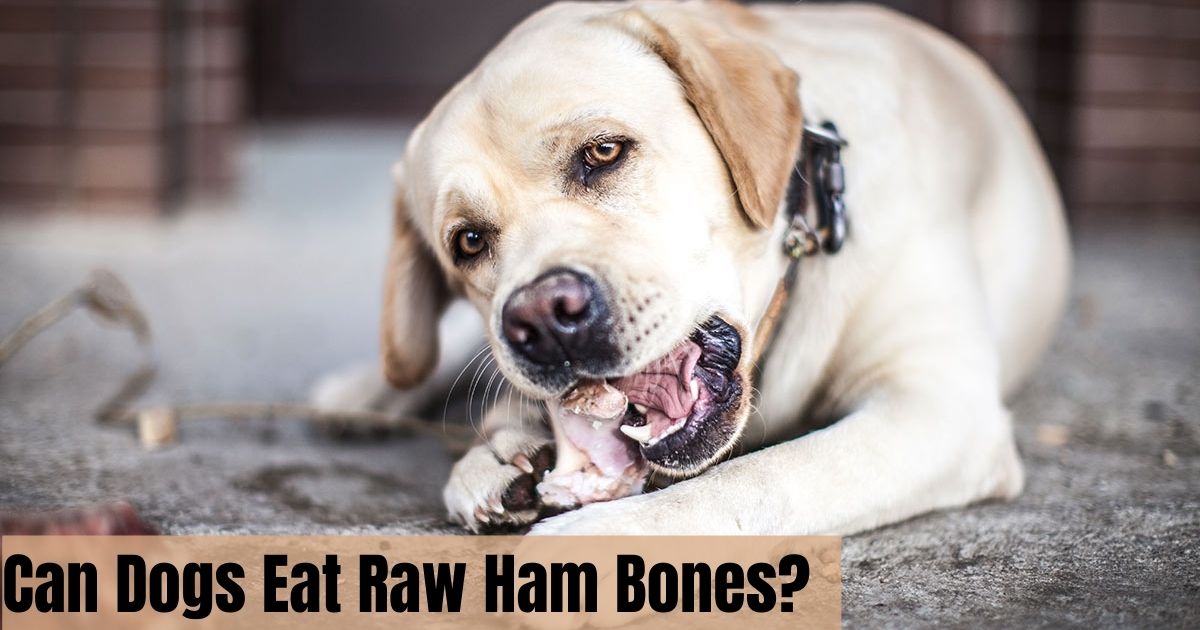Can dogs eat raw ham bones? This is a common question for dog owners considering a raw food diet. Raw bones can present both benefits and risks. As with any diet change, research and veterinary guidance are key.
The raw feeding movement touts benefits like dental health. Yet questions linger about choking hazards or intestinal punctures. Experts land on both sides of the fence. Owners must weigh their individual dog’s needs and temperament.
With care and supervision, most healthy dogs enjoy raw recreational bones. Cooked bones splinter, causing significant risk. Raw weight-bearing bones often prove too hard. Non-weight-bearing raw bones may offer a middle ground if sourced and fed properly.
Understanding the Raw Feeding Diet for Dogs
The raw food diet for dogs aims to mimic a wild, species-appropriate diet. It emphasizes raw, minimally processed meats, organs, bones, fruits, and vegetables. Avoiding excessive cooking preserves nutrients and enzymes. Proponents believe this suits dogs’ evolutionary needs. Critics argue home-prepared raw diets risk nutritional imbalance or pathogens if not carefully formulated. Commercial freeze-dried or frozen raw formulas offer convenience but varying quality. Veterinary support ensures safety amid this polarizing debate. Owners’ research must determine what’s best for their individual dog.
Can Dogs Have Ham Shank Bones?
Ham shank bones come from the pig’s lower leg above the hock. These weight-bearing bones prove extremely hard and dense. Healthy large or giant breed adult dogs may gnaw small pieces from the ends. Yet most dogs cannot consume ham shanks. The bones won’t loosen with chewing. Aggressive efforts risk breaking teeth or sustaining mouth injuries. Owners also report intestinal obstructions or perforations when dogs swallow large, sharp pieces. For these reasons, most experts caution against feeding ham shank bones even when raw. Softer raw recreational bones better suit a dog’s needs.
Can Dogs Eat Cooked Ham Bones?
Feeding dogs cooked ham bones raises several considerations. While dogs may enjoy the taste and chewing satisfaction, there are associated risks. Cooked bones can splinter, posing a threat of intestinal blockage or perforation. Additionally, the cooking process makes bones brittle, increasing the likelihood of splintering. Excessive fat and seasoning in cooked ham may lead to digestive issues or pancreatitis in dogs. To minimize risks, offer bones in moderation, ensure they are appropriate in size for your dog, and supervise chewing sessions. Consulting with a veterinarian helps tailor a safe and suitable diet for your dog’s individual needs.
Can Dogs Eat Ham Bone Marrow?

Ham bone marrow falls into a grey area. The rich marrow inside raw ham bones provides a desirable, nutrient-dense treat for dogs. Or so it would seem. However, the hardness of weight-bearing ham bones makes the marrow difficult to extract. Aggressive chewing risks dental fractures and injuries. The marrow also has a high fat content. While healthy in moderation, too much can cause pancreatitis. Some experts view the risks as too high and avoid ham marrow altogether.
Others believe access to the marrow represents an evolutionary advantage of the raw food diet. In that camp, quality matters. The best candidates are raw, meaty non-weight bearing bones from grass-fed, antibiotic-free pigs. These provide edible marrow with less risk of tooth damage. As usual, owners must weigh their individual dog’s needs in making the decision.
Expert Opinions and Veterinarian Recommendations on Feeding Raw Ham Bones to Dogs
Experts disagree on the suitability of raw ham bones for dogs. Proponents believe raw meaty bones provide health and psychological benefits.Fresh bones act as toothbrushes while satisfying a dog’s innate need to gnaw. Critics cite risks like bone splinters swallowing or intestinal obstructions. Since studies remain limited, most veterinarians take a cautious approachin making recommendations to clients. Veterinary nutritionists also worry about unbalanced diets with excess fat or mineral imbalances. Owners feeding raw must choose appropriate bone types while providing balanced nutrition elsewhere in the diet.
Consult a vet for guidance to keep proper calcium phosporus ratios.For recreational raw bone feeding, select softer non-weight bearing raw bones without sharp edges. Always supervise chewing sessions and take bones away once small enough to swallow.
The Safety of Feeding Raw Ham Bones to Dogs

Safely feeding raw ham bones to dogs requires care and caution. While pork bones generally prove softer than beef, ham bones remain quite dense and hardy. Size matters immensely. Large, weight-bearing ham bones pose dangers from aggressive chewing as well as the real risk of intestinal obstruction with swallowed fragments. Instead most experts recommend raw, meaty recreational bones from non-weight bearing areas of the body. These recreational marrow bones have edible cartilage and soft tissue surrounded by bone less likely to chip or splinter.
Supervision also plays a key role in safety. Owners should actively monitor chewing sessions, trading bones for treats when worn down small enough to swallow.Proper sourcing from grass-fed, antibiotic-free pigs also reduces risks of pathogens while providing healthy nutrition.As with any raw bone, owners accept some risk but can mitigate concerns with knowledge, precaution and vigilance.
Benefits of Feeding Raw Ham Bones
Dental Health
The abrasive action of gnawing meat and cartilage off raw bones naturally scrubs away plaque and tartar. This helps maintain healthy teeth and gums. Owners report notably improved breath in dogs fed raw bones recreationally. The key lies in proper bone types that clean rather than crack teeth when chewed.
Psychological Well-being
Chewing satisfies a primal canine instinct for stress relief. Recreational raw bone chewing gives dogs an enjoyable, beneficial activity. This outlet curbs anxiety and destructive chewing tendencies. Puppies also benefit from the teething relief bones provide.
Nutritional Value
In addition to some protein and fat, raw bones provide calcium, phosphorus and trace minerals. These nutrients support bone health, proper growth and development and immune function. Some proponents feel raw, meaty bones provide a more bioavailable source compared to cooked products or supplements.
Additional Considerations and Precautions
While recreational raw bone chewing offers benefits, owners should take precautions. Always supervise chewing to prevent choking or ingesting large fragments. Choose bones too large for dogs to swallow and remove smaller pieces before that risk occurs. Puppy bones require extra vigilance as their developing teeth and jaws remain vulnerable to fractures and other damage. Raw diets also carry risks of nutrient imbalances or pathogens without veterinary guidance. Owners should partner with their vet to ensure diet safety and completeness.
Certain conditions like kidney disease, immunosuppression or gastrointestinal sensitivity contraindicate raw bones. Their veterinarian can best advise any health considerations. With careful selection, monitoring and sourcing, most healthy adult dogs can safely and enjoyably gnaw recreational raw bones. Their popularity indicates this represents a viable feeding option when properly implemented.
Related Post: Can Dogs Eat Rice Krispie Treats?
Alternative Options for Feeding Bones to Dogs
Raw Recreational Bones
Raw recreational bones from non-weight-bearing areas provide a digestible, consumable alternative. Rib, neck and knuckle bones have softer cartilage and lean meat supporting bone content. Owners must still supervise based on size and chewing style but these bones present less risk of tooth damage or obstruction. Poultry necks and wings, lamb necks and pork or beef knuckles offer appropriate recreational bone choices.
Dental Chews
Veterinarians may recommend specific dental chews to help remove plaque and tartar. These processed products utilize ingredients like enzymes, abrasives or antibacterial agents to clean teeth more safely than hard bones. Owners should ensure chewing satisfaction along with dental benefits. Bully sticks, horns, dried tracheas or enzyme-enhanced rawhides provide digestible alternatives without bone. Dental diets or biscuits also promote oral health through special formulations.
Other Recreational Chews
Many dog-safe chew products provide recreational enjoyment without bone risks. Food-based options include pig ears, lamb ears, pork snouts, beef tracheas, chicken feet, turkey tails and dried tendons. Various natural chews also gaining popularity utilize ingredients like yak or bison horn, deer or elk antlers and Himalayan dog chews. Even ice offers teething pups a numbing cold alternative. Owners should gauge chewing style and supervise accordingly. Aggressive chewers require durability while mild chewers warrant digestibility. Testing different textures and flavors also keeps things interesting. Rotating novel recreational chews keeps dogs mentally and physically engaged.
Unraveling the Raw Ham Bone Mystery for Dogs
Unraveling the Raw Ham Bone Mystery for Dogs” delves into the complex topic of feeding raw ham bones to dogs. The article explores the potential benefits, risks, and considerations associated with this practice. It covers nutritional aspects, potential dental benefits, and the importance of mindful portions. Additionally, it addresses safety concerns, such as splintering and bacterial contamination, providing readers with a comprehensive understanding to make informed decisions regarding this popular yet controversial canine treat.
To Bone or Not to Bone? Dog Diet Dilemmas

The question “to bone or not to bone” confronts conscientious dog owners. Considerations feature health, safety, psychology and controversy. Advocates insist recreational raw bone chewing provides dental and mental enrichment resembling ancestral wolf-life. Skeptics cite veterinarian warnings on obstruction, perforation and fracture risks. Both sides present compelling cases. In the absence of definitive research, owners must evaluate their individual dog’s needs and temperament.
Is yours an aggressive chewer or more of a licker? Does their constitution tend towards sensitivity or robustness? Have alternatives like raw food, dental chews or puzzle feeders provided adequate outlets? Correct sourcing and supervision can allow most dogs to bone safely. But those predisposed to gulping benefit from other outlets. Owners knowing their dog best makes determining appropriate bone privileges more feasible.
FAQ’s
Can I give my dog a raw ham bone?
No, raw ham bones can splinter and crack teeth or cause choking or blockages. It’s safer to give bone-in pieces of ham or substitute with bully sticks.
What if my dog eats a small ham bone?
Keep an eye for signs of discomfort like loss of appetite or lethargy. Bone fragments could puncture intestines. Call your vet right away if you see any issues.
Is it safe to give dogs ham hock bones?
Ham hock bones are too soft and fatty for dogs. They can cause pancreatitis since dogs can’t digest high fat foods well. Stick to plain bone-free slices of ham instead.
Can dogs eat raw bones?
Raw bones pose risks like fractures, cuts or blockages. Cooked bones are even more dangerous as they can splinter easily. Stick to dog toys or bully sticks designed specifically for chewing.
Do ham bones splinter?
Yes, ham bones can splinter which risks intestinal damage or blockages if pieces are ingested. They’re high in fat as well which can cause pancreatitis in dogs. Safer alternatives are recommended.
What bones are safe for dogs to eat?
Bones specifically made for dogs like bully sticks or Himalayan dog chews are generally safest. Raw meaty bones in large pieces can be OK in moderation under supervision.
Are pig ears safe for dogs?
In moderation, raw pig ears are generally a safe chew treat for dogs. Monitor that large pieces aren’t ingested which could cause choking. Throw them out after a few hours of chewing.
What should I do if my dog eats ham?
Keep an eye out for signs of intestinal blockage or distress. Large pieces of fatty/salty ham could cause pancreatitis. If vomiting, diarrhea or lethargy develop, contact your vet right away.
Why can’t dogs have onions?
Onions contain compounds toxic to dogs even in small amounts. Ingestion can cause gastrointestinal upset or damage red blood cells leading to anemia. Seek vet help immediately if your dog eats onion.
Is peanut butter good for a dog?
In moderation, peanut butter can be an occasional treat for dogs. Use all-natural varieties without xylitol or salty ingredients. Too much rich peanut butter can lead to obesity or pancreatic stress.
Conclusion
To sum it up, certain raw ham bones may be fed to dogs when chosen carefully and supervised properly. Raw recreational bones from non-weight-bearing areas offer edible chewing without extreme tooth or gullet hazards. Large, dense bones require caution and oversight to prevent problems. Owners accepting some risk can allow dogs to reap psychological and dental benefits of appropriate raw bone chewing.
But, dogs predisposed to aggressive chewing or indiscriminate swallowing do better with alternative outlets. Cooked ham bones never constitute safe options. Overall the controversy stems less from wholesale risk but individual incompatibility. With prudence and discernment, most healthy adult dogs can safely and happily reap benefits from periodic raw recreational bone chewing.









